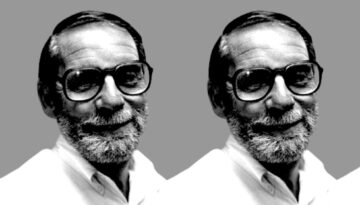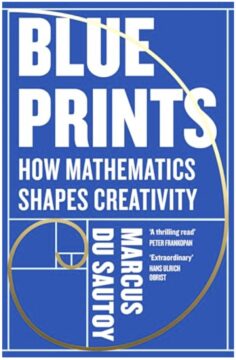Enjoying the content on 3QD? Help keep us going by donating now.
Category: Recommended Reading
The Uncollected Letters of Virginia Woolf
Zoe Guttenplan at Literary Review:

In the middle of March 1931, Virginia Woolf wrote a polite letter to a woman sixteen years her junior. The recipient, a feminist writer named Winifred Holtby, was embarking on a book-length study of Woolf’s work. ‘I should much prefer that the book should be, as you say written impersonally, from material in the British Museum,’ Woolf wrote. ‘My feeling is that when people are alive, so much personality is bound to creep in, that it is better for the critic to keep aloof as far as possible.’ By the time Holtby’s Virginia Woolf was published in October 1932 it had been pipped to the post by two books, one in German and one in French. But still, hers has the slightly bruised honour of being the first English-language monograph about Woolf.
It was certainly not the last. Woolf studies are, at this point, a cottage industry. As well as the monographs, you will find thousands of articles devoted to her life and work in the biannual Virginia Woolf Miscellany, the triannual Virginia Woolf Bulletin and numerous other journals and anthologies. There is, of course, always more to say; the possibilities for interpretation are endless.
more here.
Enjoying the content on 3QD? Help keep us going by donating now.
3 Quarks Daily Is Looking For New Columnists
 Dear Reader,
Dear Reader,
Here’s your chance to say what you want to the large number of highly educated readers that make up 3QD’s international audience. Several of our regular columnists have had to cut back or even completely quit their columns for 3QD because of other personal and professional commitments and so we are looking for a few new voices. We do not pay, but it is a good chance to draw attention to subjects you are interested in, and to get feedback from us and from our readers.
We would certainly love for our pool of writers to reflect the diversity of our readers in every way, including gender, age, ethnicity, race, sexual orientation, etc., and we encourage people of all kinds to apply. And we like unusual voices and varied viewpoints. So please send us something. What have you got to lose? Click on “Read more” below…
NEW POSTS BELOW
Sunday, June 1, 2025
Maxed Out
Matthew Karp in Sidecar:
The US political world can today be divided not only between left and right, but along another axis: Trump maximalists and Trump minimalists. Maximalists are inclined to view Trump as an agent or conduit of a sudden historical rupture, whether the transformation of the party system, the destruction of American democracy or the implosion of the liberal world order. Minimalists see Trump not as a fundamental break but rather as a lurid symbol of longer-running developments, or a symptom of crises that lie elsewhere – a black hole detracting attention from real political problems.
This is not a cleanly partisan or ideological distinction, which is one of the things that makes it interesting. There are many familiar liberal maximalists, of course – some of them have recently decamped to Canada in fear of or in protest at the tyrannical regime; and there are conservative maximalists too, mostly right-leaning newspaper columnists who have mobilized few votes but left an outsize impact on the texture and tenor of anti-Trump politics. Despite some disagreement, liberal and conservative maximalists unite in seeing the President himself as the chief and often the only issue in national politics; both have also leapt to enlist in the ‘fascism wars’, often brandishing the F-word as a cudgel to discipline the left at elections, and elsewhere.
Yet there is also a countervailing minimalism of the centre.
More here.
Enjoying the content on 3QD? Help keep us going by donating now.
Garden, Swarm, Factory
Quinn Slobodian in The Ideas Letter:
Polyps confounded political theorists in the 18th century. The creatures that collectively make up coral reefs acted in ways that defied both expectations of divine design and the established hierarchy of the animal kingdom. How could these lowest of organisms create such enormous structures—especially ones that appeared to be the product of one mind? How could microscopic creatures obstruct the ships of the most powerful forces on Earth, rupturing their hulls and forcing them to chart their way around polyp metropoli risen into islands? It’s no wonder that the anarchist anthropologist James C. Scott later drew an analogy between polyps and peasants. “Just as millions of anthozoan polyps create, willy-nilly, a coral reef,” he wrote, “so do thousands upon thousands of individual acts of subordination and evasion create a political or economic barrier reef of their own.”
The historian of science Whitney Barlow Robles quotes Scott in her wonderful book, Curious Species, where she explains how coral unsettled certainties. Fed by sunlight like grass, plants with their tentacles laid down layers of limestone. The power of polyps turned ideas of agency on their head, a molecular sightless mass acting as architect. Robles imagines it would be like “suddenly learning that butterflies, not people, planted all the trees in Central Park.”
It was a similar wonder at the endless events of the natural world that led classical liberals to draw connections between the order of nature and the order created by human exchange in the profane world of political economy. Philip Mirowski reminds us that natural metaphors serve double duty: they are “reassuring and graphically concrete images of order, situating humanity squarely at home in ‘its’ universe” while they also tame the disorder of nature, making “an unintelligible alien world comprehensible.”
Nature offered what Deirdre McCloskey calls the ”metaphors economists live by.” Because so much of our politics relies on an explicit and implicit understanding of economics, this means we live by those metaphors too. The intellectual movement of neoliberalism arrived at its ideas of the good society by thinking with and through nature.
More here.
Enjoying the content on 3QD? Help keep us going by donating now.
Sunday Poem
You Shall Not See Me
Only union with you gives joy.
The rest is tearing down one building
to put up another.
……………… But don’t break
with forms!
Boats cannot move without water.
We are misquoted texts
made right when you say, us.
We are sheep in a tightening wolf-circle:
You come like a shepherd and ask,
………………“So how are you?”
I start crying.
This means something to anyone in a body,
but what means something to you?
You can’t be spoken though you listen
to all sound. You can’t be written,
but you read everything.
You don’t sleep, yet you are the source of dream-vision.
Your ship glides over nothing,
deep silence, praise for the ONE,
who told Moses on Sinai,
………………You Shall Not See Me
by Rumi
translation: Coleman Barks
from New Rumi Translations
Maypop Books, 1987
Enjoying the content on 3QD? Help keep us going by donating now.
The Haves and Have-Yachts – inside the world of the ultrarich
Stuart Jeffries in The Guardian:
 In this droll and timely analysis of extreme wealth, New Yorker staff writer Osnos notes that superyacht demand is outstripping supply. In some countries you have to wait for bread, water or inoculations; in others for giant sea-going vessels. In 1990, there were 66 US billionaires; by 2023 there were over 700, an increase of more than 1,000%. In the same period, the number of US yachts measuring longer than 76 metres has gone from “less than 10 to more than 170”. Median US hourly wages, in contrast, have risen by just 20%. Maths is not my strong suit, but this suggests inequality is spiralling.
In this droll and timely analysis of extreme wealth, New Yorker staff writer Osnos notes that superyacht demand is outstripping supply. In some countries you have to wait for bread, water or inoculations; in others for giant sea-going vessels. In 1990, there were 66 US billionaires; by 2023 there were over 700, an increase of more than 1,000%. In the same period, the number of US yachts measuring longer than 76 metres has gone from “less than 10 to more than 170”. Median US hourly wages, in contrast, have risen by just 20%. Maths is not my strong suit, but this suggests inequality is spiralling.
There’s also a spiralling inequality in political power. Trump postures as a president for blue-collar Americans, but the people who shared the stage when he took his oath of office on 20 January tell another story. In that symbolic moment Elon Musk, Mark Zuckerberg, Bezos and Sergey Brin showed their influence was rising with their net worth. “The world watched America embrace plutocracy without shame or pretence,” writes Osnos. Meanwhile, shame and pretence are in plentiful supply elsewhere. One yacht owner tells Osnos: “No one today – except for assholes and ridiculous people – lives on land in what you would call a deep and broad luxe life. Yes, people have nice houses and all of that, but it’s unlikely that the ratio of staff to them is what it is on a boat. Boats are the last place that I think you can get away with it.”
More here.
Enjoying the content on 3QD? Help keep us going by donating now.
Five Things to Know About Assisted Dying in Canada
Katie Englehart in The New York Times:
 In 2023, one out of 20 Canadians who died received a physician-assisted death, making Canada the No. 1 provider of medical assistance in dying (MAID) in the world, when measured in total figures. In one province, Quebec, there were more MAID deaths per capita than anywhere else. Canadians, by and large, have been supportive of this trend. A 2022 poll showed that a stunning 86 percent of Canadians supported MAID’s legalization.
In 2023, one out of 20 Canadians who died received a physician-assisted death, making Canada the No. 1 provider of medical assistance in dying (MAID) in the world, when measured in total figures. In one province, Quebec, there were more MAID deaths per capita than anywhere else. Canadians, by and large, have been supportive of this trend. A 2022 poll showed that a stunning 86 percent of Canadians supported MAID’s legalization.
But in some corners, MAID has been the subject of a growing unease. While MAID in Canada was initially restricted to patients with terminal conditions — people whose natural deaths were “reasonably foreseeable” — the law was controversially amended in 2021 to include people who were suffering but who weren’t actually dying: patients who might have many years or even decades of life ahead of them. This new category includes people with chronic pain and physical disabilities.
More here.
Enjoying the content on 3QD? Help keep us going by donating now.
Friday, May 30, 2025
What John McPhee Taught Generations of Writers and Journalists
Peter Hessler at Literary Hub:
 In the spring of 1991, when I was a junior at Princeton, I took John McPhee’s seminar on nonfiction writing. Back then, I was an English major who hoped to become a novelist, and I focused primarily on writing short stories. I had no real interest in nonfiction. I hadn’t published a single word in any campus publication, and I had never considered a career in journalism. But John McPhee’s course was famous for having produced authors, and writing—in the undisciplined, impractical, and insecure dreamworld of a 21-year-old mind—was what I hoped to do someday. So I signed up for the class.
In the spring of 1991, when I was a junior at Princeton, I took John McPhee’s seminar on nonfiction writing. Back then, I was an English major who hoped to become a novelist, and I focused primarily on writing short stories. I had no real interest in nonfiction. I hadn’t published a single word in any campus publication, and I had never considered a career in journalism. But John McPhee’s course was famous for having produced authors, and writing—in the undisciplined, impractical, and insecure dreamworld of a 21-year-old mind—was what I hoped to do someday. So I signed up for the class.
By the time I arrived for the first session, in a beautiful, wood-paneled room on the ground floor of a gothic building called East Pyne Hall, the only piece of John McPhee’s writing that I had ever read was the course description. In retrospect, I find this mortifying. But it was also characteristic of the 21-year-old dreamworld: everything was of the moment; nothing was carefully considered. One might assume that, before taking a course taught by John McPhee, who had been described by The Washington Post as “the best journalist in America,” a student would feel inspired to read a couple of books or maybe even one magazine article by John McPhee. But this idea apparently never occurred to me.
More here.
Enjoying the content on 3QD? Help keep us going by donating now.
These Scents Were Once Erased by Humans, Now They’re Back
Victoria Malloy in Atmos:
 The concept of bringing back the scent of extinct flowers started with Ginkgo Bioworks, a Boston-based biotech company founded by five MIT scientists, with an ethos rooted in the lessons of Jurassic Park: that life finds a way. “A lot of the story of biotechnology for the past two decades has been talking about living things through the metaphor of computers and code,” said Christina Agapakis, an interdisciplinary synthetic biologist and former head of creative at Ginkgo Bioworks. “Living things are coded with DNA. Now, life can be programmable.”
The concept of bringing back the scent of extinct flowers started with Ginkgo Bioworks, a Boston-based biotech company founded by five MIT scientists, with an ethos rooted in the lessons of Jurassic Park: that life finds a way. “A lot of the story of biotechnology for the past two decades has been talking about living things through the metaphor of computers and code,” said Christina Agapakis, an interdisciplinary synthetic biologist and former head of creative at Ginkgo Bioworks. “Living things are coded with DNA. Now, life can be programmable.”
At the Harvard University Herbarium, more than 5 million specimens of algae, fungi, and plants are preserved—pressed, labeled, and stored in floor-to-ceiling cabinets that stretch back centuries. Researchers have long used these collections to study biodiversity and evolutionary history. But in a video providing a look inside the Harvard Herbarium, Charles Davis, a professor of organismic and evolutionary biology and curator of vascular plants, underscored that natural history collections are today seeing a renewed purpose for advancing innovation in the face of accelerating climate change and a sixth mass extinction.
More here.
Enjoying the content on 3QD? Help keep us going by donating now.
Turing Award Winner Yoshua Bengio: The Catastrophic Risks of AI — and a Safer Path
Enjoying the content on 3QD? Help keep us going by donating now.
The manufacturing of Jewish Zionist consensus lies at the heart of American liberalism’s identity crisis
Benjamin Balthaser in the Boston Review:
 Several recent books chronicling specifically American Jewish dissent from Zionism, past and present, demonstrate how this relatively recent Zionist “consensus” was manufactured. Geoffrey Levin and Marjorie N. Feld tell stories of once-mainstream dissidents and naysayers purged from the ranks of even straightforwardly liberal American Jewish institutions, demonstrating the force with which unconditional support for Israel had to be constructed from the top down in the immediate postwar era. Looking to the more recent past, Oren Kroll-Zeldin and Peter Beinart examine efforts—in Beinart’s case, his own—to break through that heavily policed consensus since the turn of the century.
Several recent books chronicling specifically American Jewish dissent from Zionism, past and present, demonstrate how this relatively recent Zionist “consensus” was manufactured. Geoffrey Levin and Marjorie N. Feld tell stories of once-mainstream dissidents and naysayers purged from the ranks of even straightforwardly liberal American Jewish institutions, demonstrating the force with which unconditional support for Israel had to be constructed from the top down in the immediate postwar era. Looking to the more recent past, Oren Kroll-Zeldin and Peter Beinart examine efforts—in Beinart’s case, his own—to break through that heavily policed consensus since the turn of the century.
In a recent conversation with Beinart and Rachel Shabi for the London Review of Books podcast, Adam Shatz asked: Why bother, at this particular moment, to write about Jews? As I read through these narratives, it occurred to me that I was reading as much about the decline of American liberalism as about the transformation of American Jewish thought and institutions.
More here.
Enjoying the content on 3QD? Help keep us going by donating now.
Listening Closely to John Adams
Chris Cohen at The Nation:
 Unlike the other usual contenders for the title of greatest living American composer, who rose up out of lofts and art galleries (Glass, Reich) or Hollywood recording studios (John Williams), Adams is a denizen of the concert hall and the opera house—the restless maximalism of his greatest works is at its best live, heard with undivided attention. And unlike the atonal modernism he rejected, his music has a certain populist quality, a fundamental legibility to broad audiences. But keeping track of the rapidly shifting moods and subversions and extensions of musical convention may be an acquired taste: It can seem that the innovations that made his reputation have simultaneously restricted his renown largely to the confines that the classical music world has created for itself.
Unlike the other usual contenders for the title of greatest living American composer, who rose up out of lofts and art galleries (Glass, Reich) or Hollywood recording studios (John Williams), Adams is a denizen of the concert hall and the opera house—the restless maximalism of his greatest works is at its best live, heard with undivided attention. And unlike the atonal modernism he rejected, his music has a certain populist quality, a fundamental legibility to broad audiences. But keeping track of the rapidly shifting moods and subversions and extensions of musical convention may be an acquired taste: It can seem that the innovations that made his reputation have simultaneously restricted his renown largely to the confines that the classical music world has created for itself.
It’s also not such a mystery why Adams isn’t usually considered a man of the left: He tends to reject the idea that he’s a political composer, and if you come to Adams for straightforward moral judgements and affirmation, you’re going to be disappointed. He’s not a reliable source of public statements, nor is he in the business of giving unambiguous analysis of his own work.
more here.
Enjoying the content on 3QD? Help keep us going by donating now.
Descartes Be Damned
Graham Tomlin in Literary Review:
 What does it mean to be modern? The answer was largely determined rather early in the modern era by three thinkers who, as luck would have it, not only came from the same place and spoke the same language but were also near contemporaries. When René Descartes was born in 1596, Michel de Montaigne had only been dead for four years. Blaise Pascal, the third of them, was born in 1623, when Descartes was not even thirty and yet to make a name for himself. In 1647, Pascal and Descartes, the young scientific prodigy and the celebrated founder of modern rationalism, would meet in person, but the encounter didn’t go very well. Descartes didn’t seem particularly impressed by Pascal, while Pascal must have found Descartes a touch too patronising. To ensure the survival of their mutual admiration, certain people should perhaps steer clear of each other.
What does it mean to be modern? The answer was largely determined rather early in the modern era by three thinkers who, as luck would have it, not only came from the same place and spoke the same language but were also near contemporaries. When René Descartes was born in 1596, Michel de Montaigne had only been dead for four years. Blaise Pascal, the third of them, was born in 1623, when Descartes was not even thirty and yet to make a name for himself. In 1647, Pascal and Descartes, the young scientific prodigy and the celebrated founder of modern rationalism, would meet in person, but the encounter didn’t go very well. Descartes didn’t seem particularly impressed by Pascal, while Pascal must have found Descartes a touch too patronising. To ensure the survival of their mutual admiration, certain people should perhaps steer clear of each other.
More here.
Enjoying the content on 3QD? Help keep us going by donating now.
Bottom Line: We Live in the Most Exciting Time Ever
Peter Diamandis in Singularity Hub:
 In 2025, in accordance with Moore’s Law, we’ll see an acceleration in the rate of change as we move closer to a world of true abundance. Here are eight areas where we’ll see extraordinary transformation in the next decade:
In 2025, in accordance with Moore’s Law, we’ll see an acceleration in the rate of change as we move closer to a world of true abundance. Here are eight areas where we’ll see extraordinary transformation in the next decade:
5. Disruption of Healthcare
Existing healthcare institutions will be crushed as new business models with better and more efficient care emerge. Thousands of startups, as well as today’s data giants (Google, Apple, Microsoft, SAP, IBM, etc.) will all enter this lucrative $3.8 trillion healthcare industry with new business models that dematerialize, demonetize and democratize today’s bureaucratic and inefficient system. Biometric sensing (wearables) and AI will make each of us the CEOs of our own health. Large-scale genomic sequencing and machine learning will allow us to understand the root cause of cancer, heart disease and neurodegenerative disease and what to do about it. Robotic surgeons can carry out an autonomous surgical procedure perfectly (every time) for pennies on the dollar. Each of us will be able to regrow a heart, liver, lung or kidney when we need it, instead of waiting for the donor to die.
More here.
Enjoying the content on 3QD? Help keep us going by donating now.
David Salle Talks About Painting
Enjoying the content on 3QD? Help keep us going by donating now.
The Radical Development of an Entirely New Painkiller
Rivka Galchen at The New Yorker:
 Pain might flicker, flash, prickle, drill, lancinate, pinch, cramp, tug, scald, sear, or itch. It might be blinding, or gruelling, or annoying, and it might, additionally, radiate, squeeze, or tear with an intensity that is mild, distressing, or excruciating. Yet understanding someone else’s pain is like understanding another person’s dream. The dreamer searches out the right words to communicate it; the words are always insufficient and imprecise. In 1971, the psychologist Ronald Melzack developed a vocabulary for pain, to make communication less cloudy. His McGill Pain Questionnaire, versions of which are still in use today, comprises seventy-eight words, divided into twenty groups, with an additional five words to describe intensity and nine to describe pain’s relationship to time, from transient to intermittent to constant. Not included in the M.P.Q. is the language that Friedrich Nietzsche used in describing the migraines that afflicted him: “I have given a name to my pain and call it ‘dog.’ It is just as faithful, just as obtrusive and shameless, just as entertaining, just as clever as any other dog.”
Pain might flicker, flash, prickle, drill, lancinate, pinch, cramp, tug, scald, sear, or itch. It might be blinding, or gruelling, or annoying, and it might, additionally, radiate, squeeze, or tear with an intensity that is mild, distressing, or excruciating. Yet understanding someone else’s pain is like understanding another person’s dream. The dreamer searches out the right words to communicate it; the words are always insufficient and imprecise. In 1971, the psychologist Ronald Melzack developed a vocabulary for pain, to make communication less cloudy. His McGill Pain Questionnaire, versions of which are still in use today, comprises seventy-eight words, divided into twenty groups, with an additional five words to describe intensity and nine to describe pain’s relationship to time, from transient to intermittent to constant. Not included in the M.P.Q. is the language that Friedrich Nietzsche used in describing the migraines that afflicted him: “I have given a name to my pain and call it ‘dog.’ It is just as faithful, just as obtrusive and shameless, just as entertaining, just as clever as any other dog.”
Specific words for pain can correlate with the underlying causes of it—and different causes point to different approaches to relief. A steroid injection might help with a slipped disk, Tylenol with injuries from a fall, a dark room with a migraine, and a hot-water bottle with a stomach ache, unless the stomach ache is caused by appendicitis, which calls for a more radical remedy.
more here.
Enjoying the content on 3QD? Help keep us going by donating now.
Friday Poem
Resemblances
On top of those low mountains the surprising snow lingers.
Here in the valley beside the small stream, a snow of almond blossoms.
A congruence, then, between high and low, or is it only the eye
playing its old game of this is like that?
How much we’ve learned from these resemblances,
the white horses of the waves, the white spume of their manes
flying behind their fierce, measured charge to the shore.
To make the image whole we see, behind them, a flash of the sea god riding
/his chariot.
And when a bolt of lightning hurtles down on us like a spear,
we think of the hurler and meet, for the first time the sky lord.
We must give him a place on which to stand and so – heaven.
And when the sweetness of spring softens our small wills,
we see the Goddess sailing on her shell into the bay of our wondering.
I know I have left out their dark brother, but he is never not here. The mountain
snow will melt. The almond blossoms, already, have fallen from the trees
Enjoying the content on 3QD? Help keep us going by donating now.
Thursday, May 29, 2025
How great music uses prime numbers
Marcus du Sautoy at Big Think:
 In the first movement of his piece, Messiaen wanted to create the strange sense of time ending. He achieved this in the most stunning manner. Time depends on things repeating, so he needed to produce a structure where you never truly hear the moment of repetition. While the clarinet imitates a blackbird and the violin a nightingale, the piano part plays a 17-note syncopated rhythm that just repeats itself over and over. But the chord sequence that the pianist plays, set to this rhythm sequence, consists of 29 chords, which are again repeated over and over. Such repeating patterns might lead to boredom and predictability, but not in this case. Because Messiaen’s choice of numbers—17 and 29—means that something rather magical… or mathematical, occurs. The numbers he chose are prime numbers, and their mutual indivisibility means that the rhythm and harmony that Messiaen has set up never get back in sync once the piece is in motion.
In the first movement of his piece, Messiaen wanted to create the strange sense of time ending. He achieved this in the most stunning manner. Time depends on things repeating, so he needed to produce a structure where you never truly hear the moment of repetition. While the clarinet imitates a blackbird and the violin a nightingale, the piano part plays a 17-note syncopated rhythm that just repeats itself over and over. But the chord sequence that the pianist plays, set to this rhythm sequence, consists of 29 chords, which are again repeated over and over. Such repeating patterns might lead to boredom and predictability, but not in this case. Because Messiaen’s choice of numbers—17 and 29—means that something rather magical… or mathematical, occurs. The numbers he chose are prime numbers, and their mutual indivisibility means that the rhythm and harmony that Messiaen has set up never get back in sync once the piece is in motion.
More here.
Enjoying the content on 3QD? Help keep us going by donating now.
Life is thought to have begun when RNA began replicating itself, and researchers have got close to achieving this in the lab
Michael Le Page in New Scientist:
 The goal of understanding how inert molecules gave rise to life is one step closer, according to researchers who have created a system of RNA molecules that can partly replicate itself. They say it should one day be possible to achieve complete self-replication for the first time.
The goal of understanding how inert molecules gave rise to life is one step closer, according to researchers who have created a system of RNA molecules that can partly replicate itself. They say it should one day be possible to achieve complete self-replication for the first time.
RNA is a key molecule when it comes to the origins of life, as it can both store information like DNA and catalyse reactions like proteins. While it isn’t as effective as either of these, the fact that it can do both means many researchers believe life began with RNA molecules that were capable of replicating themselves. “This was the molecule that ran biology,” says James Attwater at University College London.
But creating self-replicating RNA molecules has proved difficult. RNA can form double helices like DNA and can be copied in the same way, by splitting a double helix in two and adding RNA letters to each strand to create two identical helices. The problem is that RNA double helices stick together so strongly that it is hard to keep the strands separate for long enough to allow replication.
Now, Attwater and his colleagues have found that sets of three RNA letters – triplets – bind strongly enough to each strand to prevent this rezipping.
More here.
Enjoying the content on 3QD? Help keep us going by donating now.
